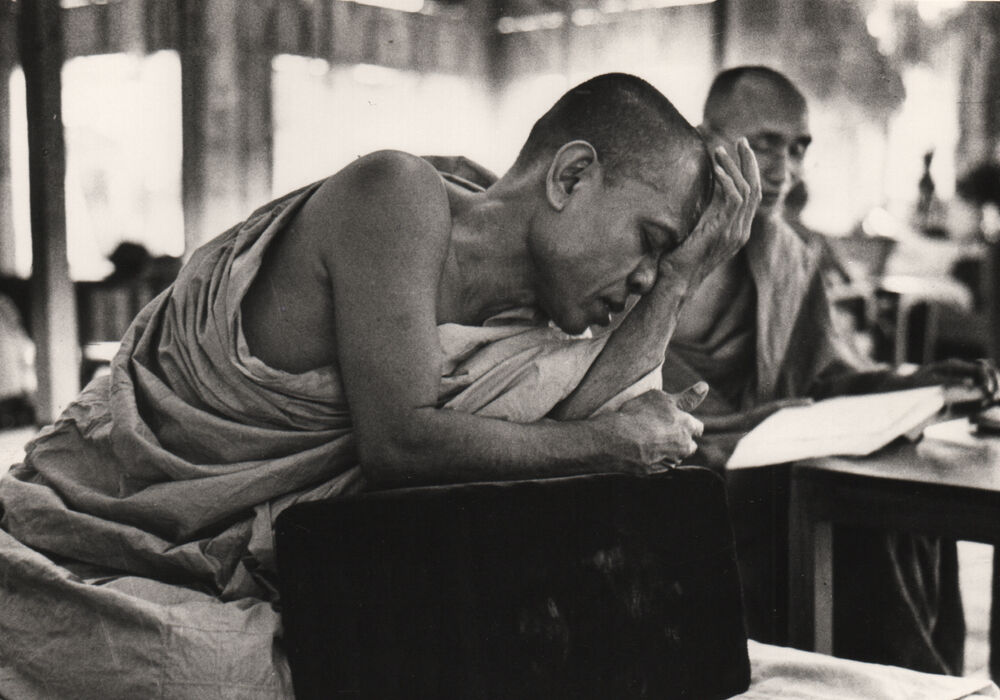
Temples of Burma. Jan 21, 1950
Bert Hardy
1913 - 1995
16.3 x 23.9 cm.
© Bert Hardy | Picture Post
Om fotografen
Bert Hardy (1913 – 1995) was a documentary and press photographer known for his work published in the Picture Post magazine between 1941 and 1957. Bert Hardy rose from humble working class origins in Blackfriars, he left school at age 14 to work for a chemist who also processed photos. and his first big sale came when he photographed King George V and Queen Mary in a passing carriage. Hardy freelanced for The Bicycle magazine, and bought his first small-format Leica 35 mm.
He signed on with the General Photographic Agency as a photographer, then founded his own freelance firm Criterion in 1941. Hardy was recruited by the editor Tom Hopkinson of the leading picture publication of the 1930s and 1940s, Picture Post, and became the Post's Chief Photographer, after he earned his first photographer credit for his 1 February 1941 photo-essay about Blitz-stressed fire-fighters.
Hardy served as a war photographer in the Army Film and Photographic Unit from 1942 until 1946, he took part in the D-Day landings in June 1944, covered the liberation of Paris, the allied advance across the Rhine and was one of the first photographers to enter the liberated Belsen to record the suffering there. He also saved some Russian slaves from a fire set by German police in the city of Osnabrück, before photographing the aftermath.
Near the end of World War II, Hardy went to Asia, where he became Lord Mountbatten's personal photographer. He later went on the cover the Korean War reporting on United Nations atrocitiesat Pusan in 1950, and later and on that war's turning point, the Battle of Inchon, photojournalism for which he won the Missouri Pictures of the Year Award.
Bert Hardy